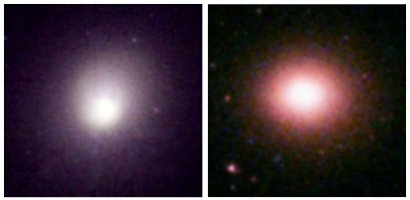Yael Petar

Deep space observations of two high X-ray galaxy clusters made by the XMM-Newton space satellite allowed a group of astronomers from the Dutch space research institute SRON to measure the chemical composition of the clusters with unprecedented precision. In order to do this, the XMM-Newton satellite observed each cluster for a day and a half. Discovering the chemical composition of galaxy clusters is crucial to understanding the origin of the chemical elements in the universe.
Galaxy clusters are the largest objects in the universe. When we look at them through optical telescopes we see hundreds and maybe even thousands of galaxies in a volume of space that is several million light years long.
But what we see in an optical telescope is only the tip of the iceberg - most of the atoms that make up the galaxy clusters are in a state of aggregation of hot gas that emits X-ray radiation. The hot gas has about 5 times more mass than the galaxies. Most of the chemical elements that are formed in stars located in galaxy clusters and which are distributed through supernova explosions into the space around them, become part of the hot gas that emits the radiation.
All the chemical elements in the universe except hydrogen and helium were formed in stars and ejected out into interstellar space through stellar winds and supernova explosions. Astronomers usually divide supernovae into two basic types: core-collapse supernovae and type Ia supernovae. Those core-collapsed supernovae are created when a star, in its twilight years, collapses into a neutron star or a black hole. Supernovae of this type produce a lot of oxygen, neon and magnesium. Type Ia supernovae, on the other hand, explode when a white dwarf draws in material from a neighboring star, until it becomes a star of such enormous mass that it explodes. Supernovae of this type produce a lot of iron and nickel.
Deep space observations made using XMM-Newton made it possible to determine the abundance of 9 elements in the hot plasma of the two galaxy clusters (known as 2A 0335+096 and Sarsik 159-03). Image number 2 shows spectral lines of the same elements in addition to a chromium line observed in a galaxy cluster for the first time. When the astronomers compared the frequency of the detected elements to the theoretical production of supernovae, they found that about 30% of the supernovae in these clusters were white dwarfs that exploded (type Ia), and the rest were collapsing stars at the end of their lives (core-collapsed supernovae). This number is between the value found for our galaxy (where the relative number of type Ia supernovae is about 13%) and the current relative frequency determined by the Lick Observatory supernova search (about 42% of all discovered supernovae are type Ia).
It was also found that all the supernova models predicted that there would be much less calcium than what was observed in the galaxy clusters and likewise, that those models cannot explain the high abundance of nickel that was observed. These discrepancies indicate that astronomers still do not fully understand the composition and enrichment of supernovae. Since galaxy clusters are considered a very similar model to the universe, their X-ray spectroscopy may help refine supernova models.
In the spatial distribution of the elements in the cluster we also find information about the history of the clusters. The distribution of the elements in 2A 0335+096 indicates ongoing merging. The distribution of oxygen and iron in Sarsik 159-03 indicates that, although most of the enrichment of supernovae whose cores collapsed took place a long time ago, type Ia supernovae still continue to enrich the hot gas with especially heavy elements in the core of the cluster.
For information on the European Space Agency website
Astrophysics expert - galaxies
https://www.hayadan.org.il/BuildaGate4/general2/data_card.php?Cat=~~~477962919~~~181&SiteName=hayadan
